Creating feedback emails that get results (with examples & templates)
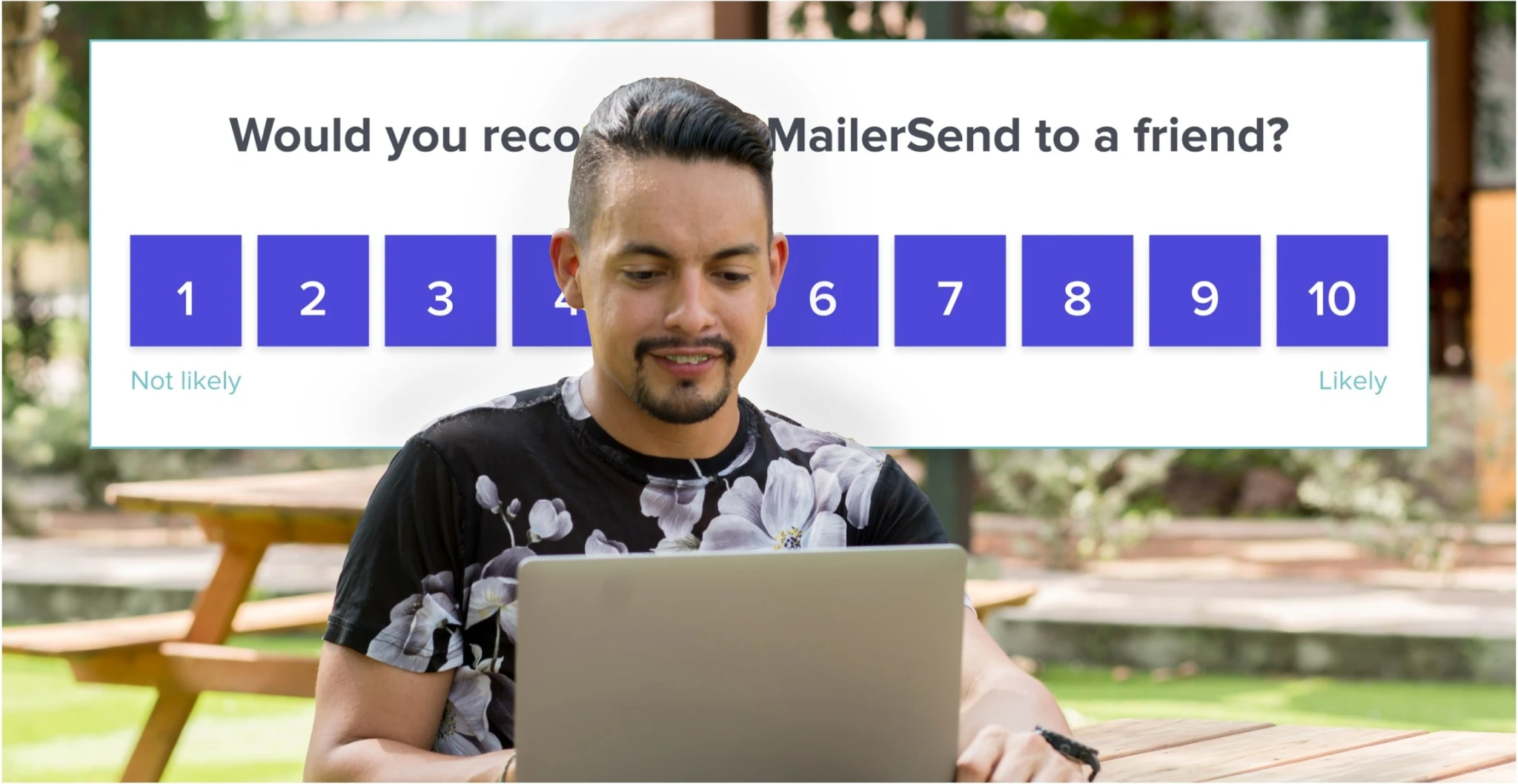
- What is a feedback email?
- Feedback email examples
- Benefits of feedback emails
- 1. Improves your product or service
- 2. Measures customer satisfaction
- 3. Makes customers feel valued
- 4. You can use feedback for case studies or stats
- 5. Brand trust through active follow-up
- Best practices for feedback emails
- How to send feedback emails
- Automate feedback emails
- Close the feedback loop
- Start collecting feedback now!
But there’s more to consider than simply asking for feedback. To ensure you get the highest rate of response, it’s important to think about timing, messaging, and how providing feedback will benefit the customer.
Fortunately, there are several best practices you can follow that will help you send effective feedback emails that get results. Read on to find out more and learn how to automate feedback requests with MailerSend
What is a feedback email?
A customer feedback email is a type of transactional email that collects answers to a survey or poll via different types of questions, such as multiple-choice or open-ended questions. Unlike review emails that ask people to submit a review online or on social media, feedback emails gather opinions and suggestions. The feedback is then fed into a customer feedback loop which allows for ongoing improvement based on customer insights.
Feedback email examples
1. Here’s a customer feedback email from Decathlon. They make it clear in the email that they collect feedback so they can improve their products and services.
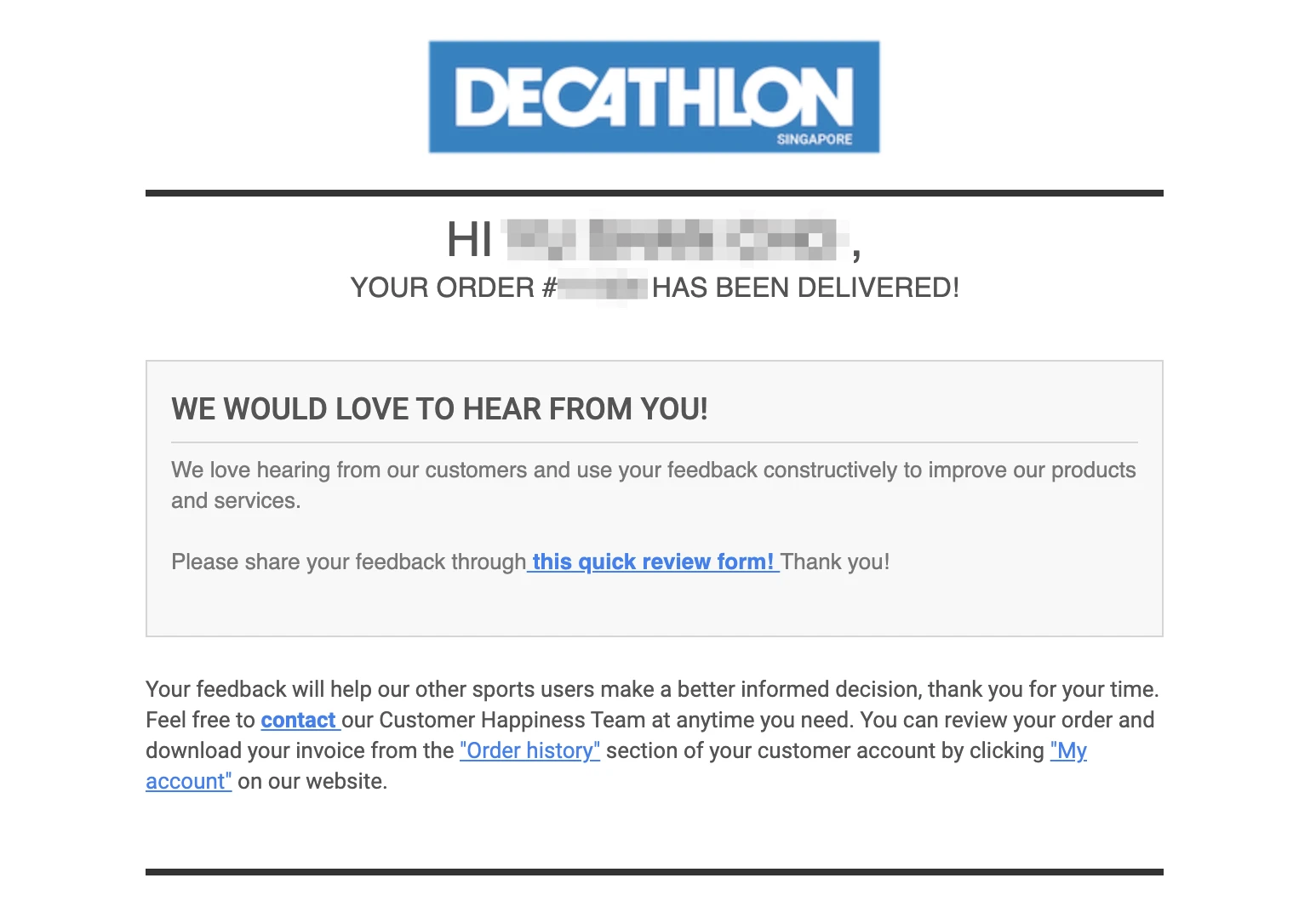
2. Compare this with a review email from Klook, a travel booking platform. This email is asking the recipient to submit a review to help other potential customers make a decision.

3. As well as asking for feedback about your products, you can also ask for feedback about experiences with your app, website, delivery experience or customer support. Here’s a short and sweet example from Asos.
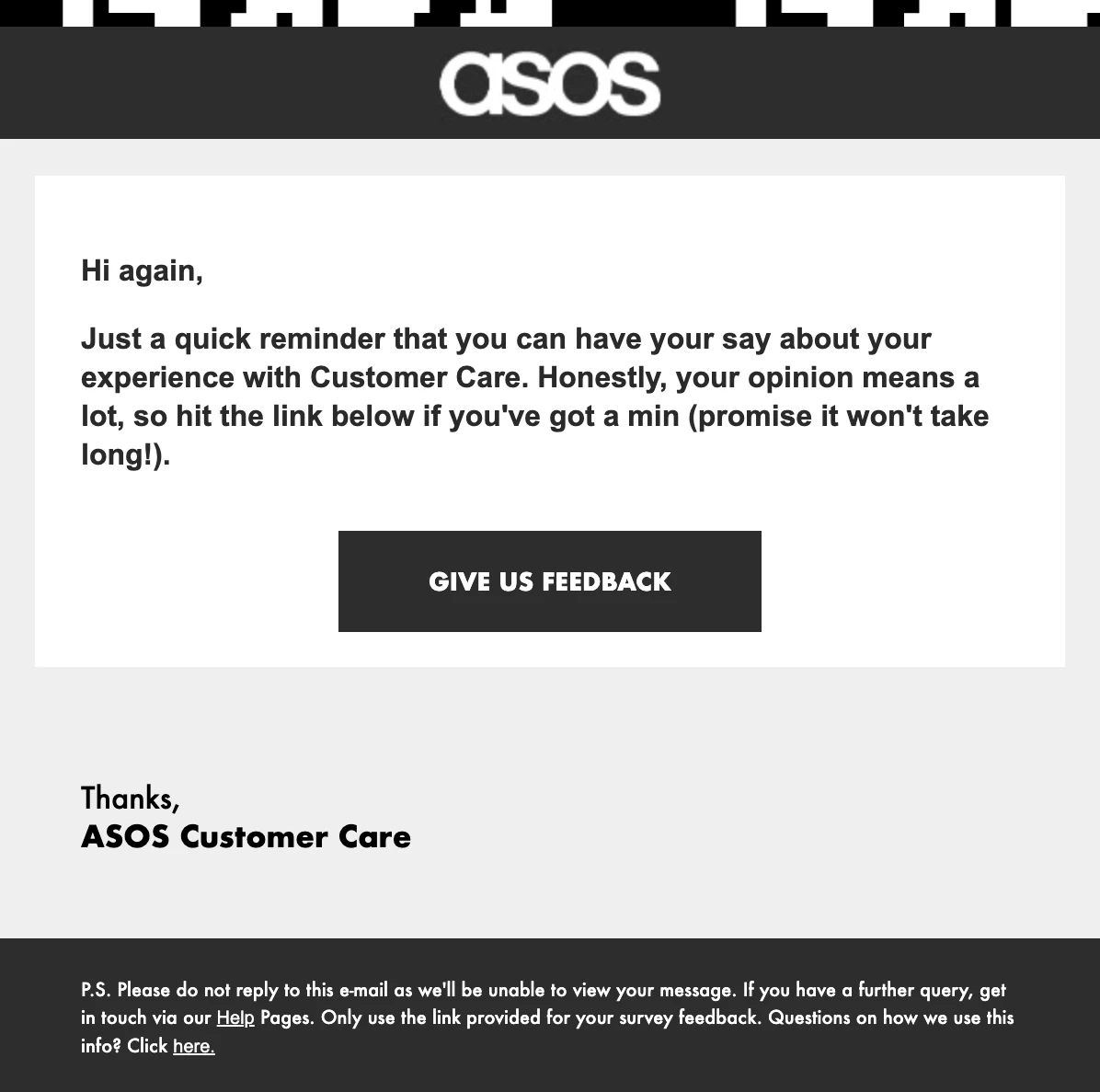
4. The below is a great example of how local businesses that use online reservation systems can collect feedback after the customer has visited.
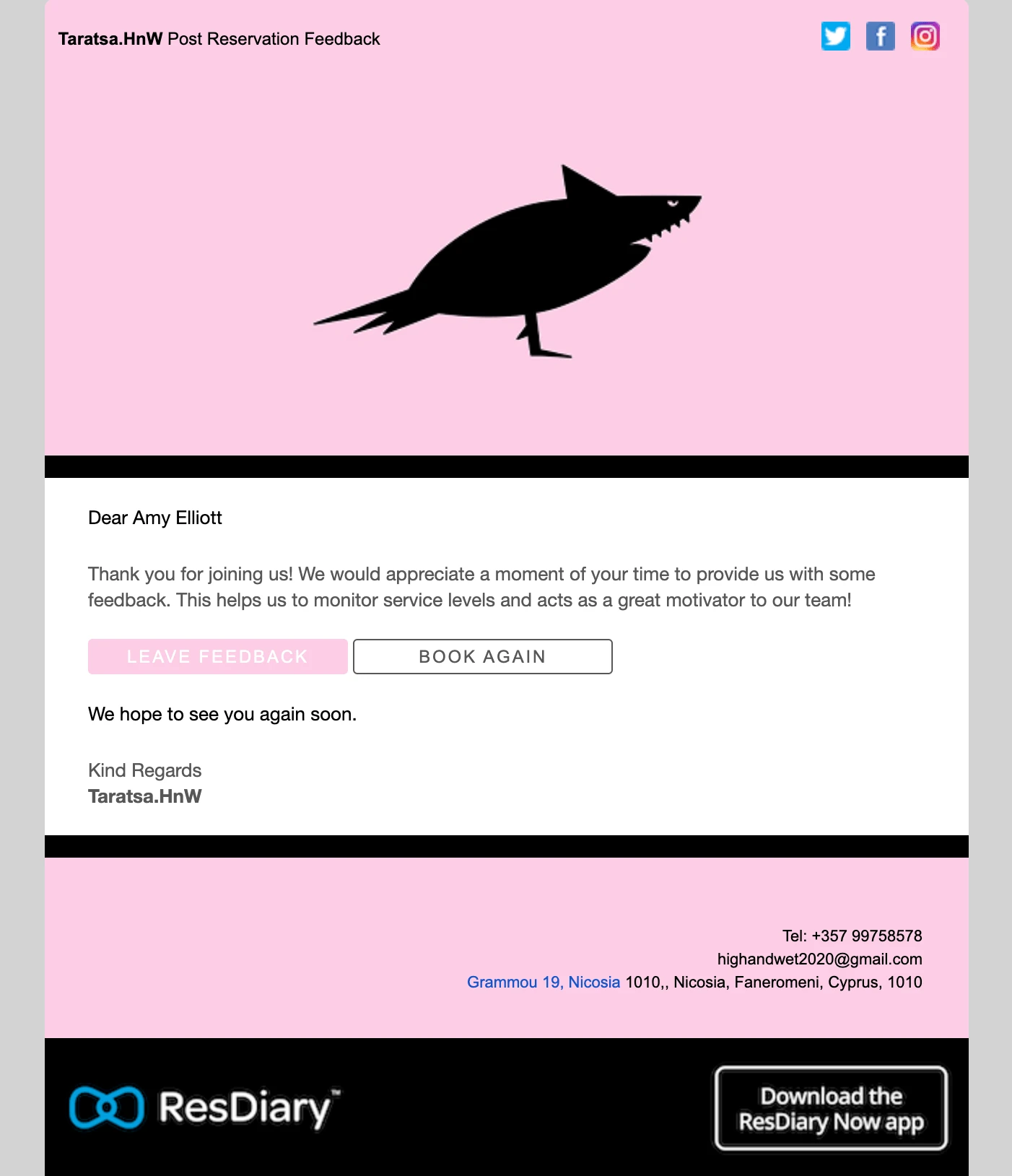
5. In this feedback email from Forest Adventure, to get regular customers to return and attract new ones, they want to know what they can do to keep delivering a great outdoor experience! 🌴
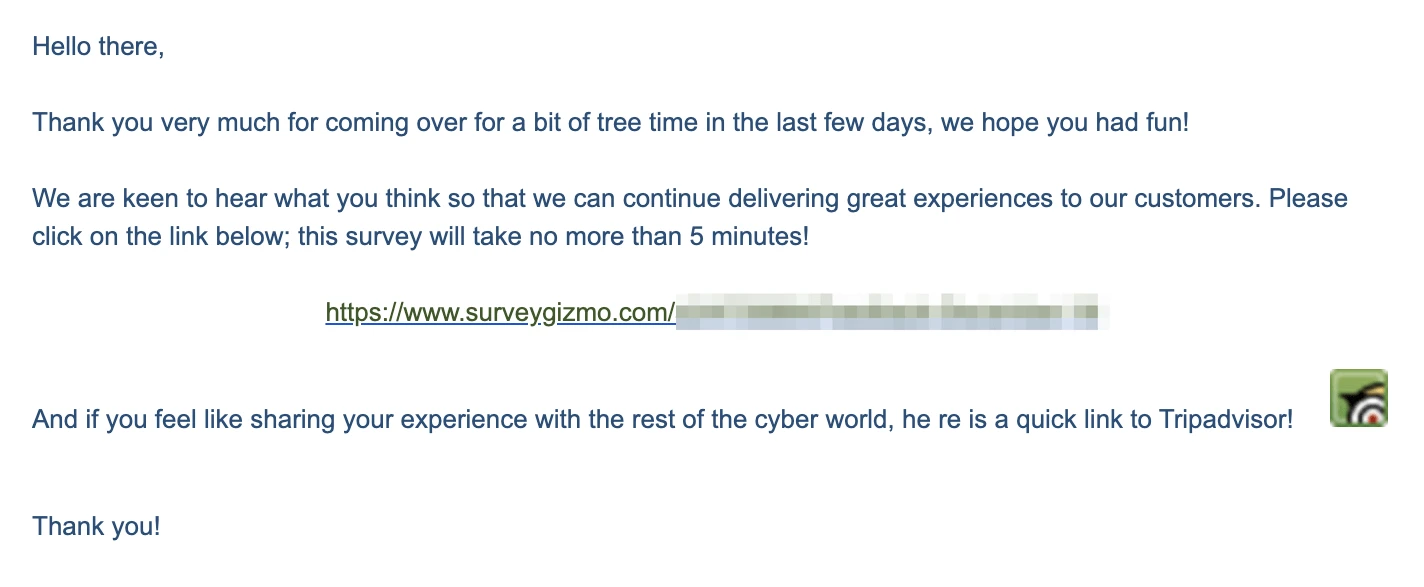
6. Here’s an example from an e-commerce site, ShopRunner, that sends an NPS survey after every purchase.
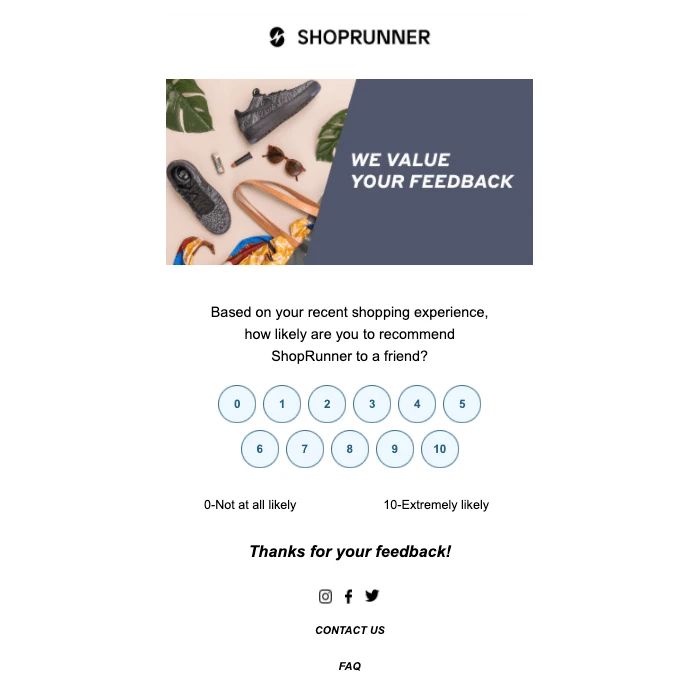
7. Not only does this feedback request email from IKEA include an incentive, but it also reassures customers that their experience matters and they are valued.
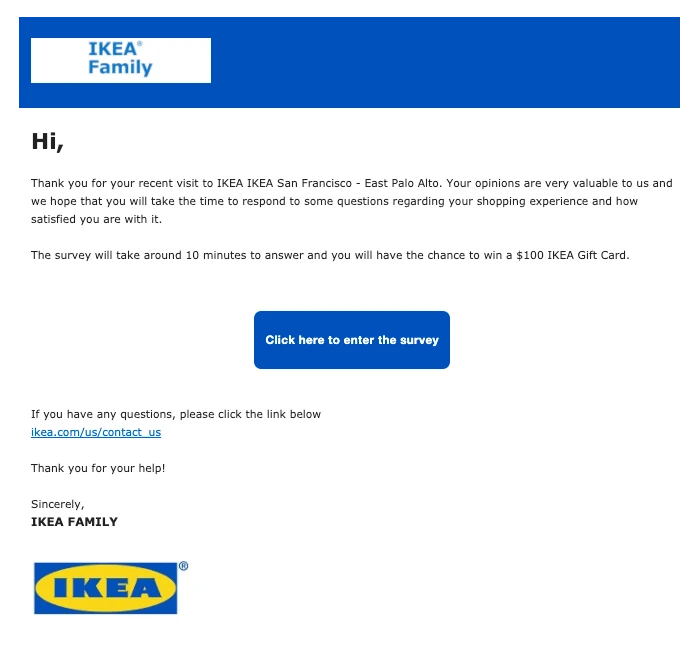
8. This example from Sundress offers an incentive of 15% discount and explains how providing a review will help the company to develop future collections.
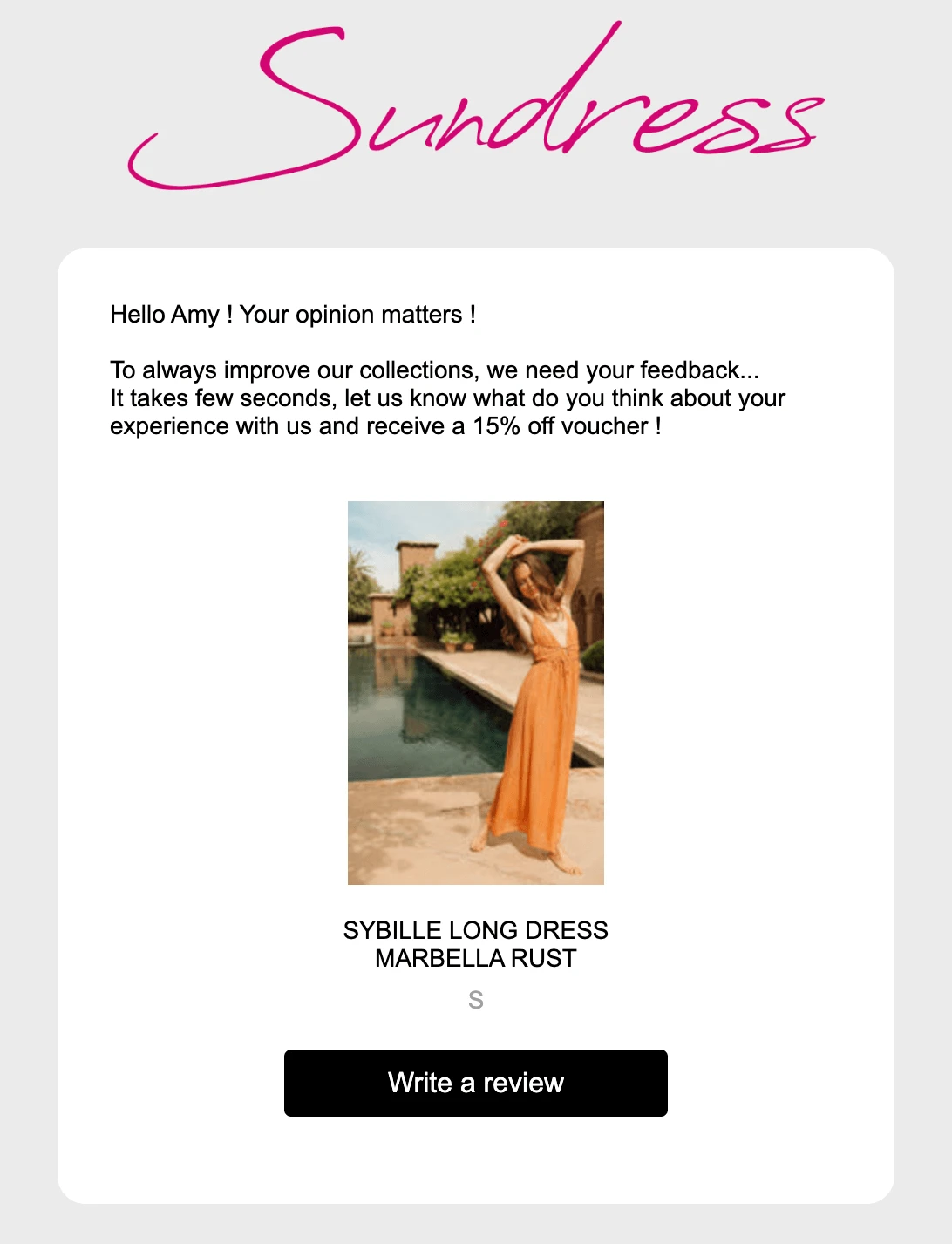
Benefits of feedback emails
1. Improves your product or service
The number one goal of feedback emails is to learn what you’re doing well and the things that you need to improve on. Happy customers are loyal customers who will contribute to the growth of your business!
2. Measures customer satisfaction
Your business growth also depends on the impression your customers have of your brand. A popular way to measure customer experience is to calculate your Net Promoter Score (NPS) by asking the question below and letting people choose an answer from 1 to 10.
“How likely are you to recommend our brand to a friend or colleague?”
People who answer 0 to 6 are detractors, 7 or 8 are neutral, and 9 or 10 and promoters. You then subtract the percentage of detractors from the percentage of promoters to get a score out of 100 that you can use to track your company’s overall customer satisfaction. The higher the score the more likely you are to generate new customers from word-of-mouth positive reviews.
You can easily add surveys to email templates to create feedback emails in MailerSend with the Survey block.
3. Makes customers feel valued
Sending a customer feedback survey tells recipients that their opinion is important and valued, which strengthens customer relationships and increases brand loyalty. When you involve people in the decision-making process they feel more attached to your brand because they feel like a part of it!
4. You can use feedback for case studies or stats
Consumers often look for reassurance before committing to a purchase or subscription. You can use the feedback you receive to collate statistics about customer satisfaction and publish these findings throughout your website or in case studies as a form of social proof.
5. Brand trust through active follow-up
When you receive feedback and act on it, you show your customers that your main priority is them. It’s easy for businesses to only care about the bottom line, but when you show customers that you actually care about providing the best product or service, you’ll grow trust in your brand.
9 best practices for creating customer feedback emails
Now that you understand the strategies behind feedback emails, here’s how to write and design them to persuade people to participate.
1. Write a captivating feedback email subject line
A compelling subject line stands out from the clutter of the inbox—it’s the key to higher open rates and better survey participation.
The first step in writing a great customer feedback subject line is to make it relevant. Your subject line needs to remind the recipient of something they did or purchased. Mentioning your brand can help to jog their memory!
Feedback email subject line examples
Looking for your feedback regarding Carlton Dublin Airport Hotel
Please help us make your next Ninja Van experience GREAT!
Help us improve your advertising experience on Facebook!
We need your feedback on your recent visit to IKEA!
Your previous transfer with Express Airport Transport
Was it love at first site? 😍 Leave your feedback for 100 points!
Share Your Thoughts for the Chance to Win
How was your order? Let us know 🤩
Another way is to personalize the subject line with variables. Make a stronger connection and humanize the experience by inserting your customer’s name, your location or a support agent’s name. Here are some examples.
Dear {$name}, are you satisfied with This Company?
Thank you for your visit to {$location}
How was your experience with {$customer_support_name}?
For more best practices about great subject lines, check out How to write the best email subject lines to boost open rates from our email marketing partner, MailerLite.
2. Start with a personalized greeting
When the recipient opens your customer feedback email, keep the engagement going by personalizing the greeting with variables. This small touch can give your email a little something extra like The Mom Project.

If you are using a personalized greeting like “Hi First Name,” you can use advanced personalization to specify the default text—like “there”—to replace the name in case the recipient hasn't provided it. Learn more about advanced personalization.
3. Explain the purpose of the email (be specific)
Be honest with recipients and explain why you are contacting them. In addition to improving your products and services, there may be other reasons why you want to hear from your customer base:
What features do customers want to see in a new product?
Are people satisfied with the level of customer service you’re providing?
How can you convince free users to sign up for a premium plan?
The goal is to get feedback on something specific, like customer support satisfaction. You’ll get a better response rate with a direct question rather than an open-ended question like, “How are we doing?”.
4. Describe how it will benefit them
Tell customers how providing their feedback will help you to improve their experience, like in Honey Gold’s email.
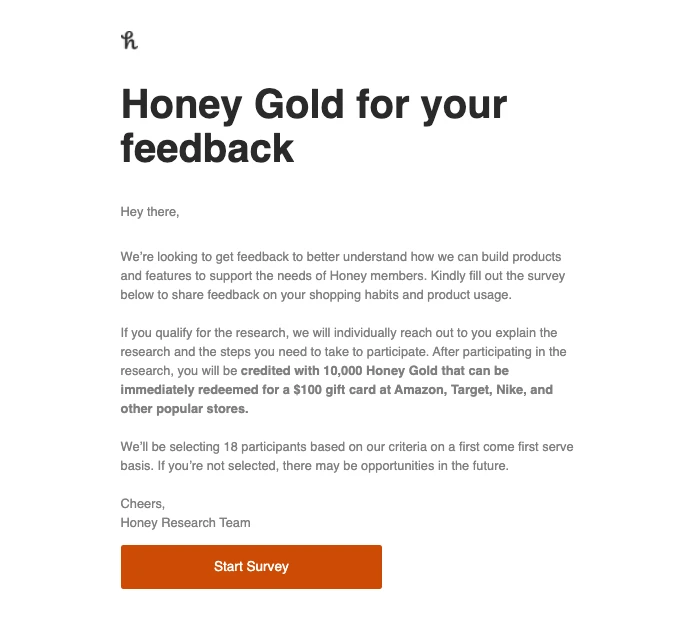
Other reasons to persuade customers to participate can include:
A new user interface to work faster
A better last-mile delivery experience
An easier-to-understand pricing structure
5. Offer an incentive
Customer feedback is like gold dust—it’s super valuable to your business. So to encourage more clients or users to respond, it’s often worth offering a nice incentive in return for their participation. A few examples of incentives you could offer are discount codes, gift cards, free gifts, or access to exclusive content.
6. Send at the right time
If you send your client feedback email too soon, the recipient might not have had time to check out the product or receive the order. Send it too late and any thoughts or feelings they once had might be just a distant memory. Sending a feedback request 3 days after delivery is your best bet for getting a response. You’ll also want to consider which days of the week and times of the day your emails get the most opens. Studies have shown that emails sent between 10am and 12pm get the highest open rates!
7. Estimate how long it will take
As recipients are reading your email, one question is flashing through their minds: “How long is this going to take?”. Remove any friction to participation by keeping your survey short and sweet: 1-2 minutes or about 3 questions in total.
If you need your survey to contain more questions, you’ll probably want to make it more appealing with an incentive.
8. Include a clear call to action
Use a strong, straightforward call to action to clearly define the step you want the reader to take. The survey link should be prominently displayed as a URL or a call-to-action button like in the example below.
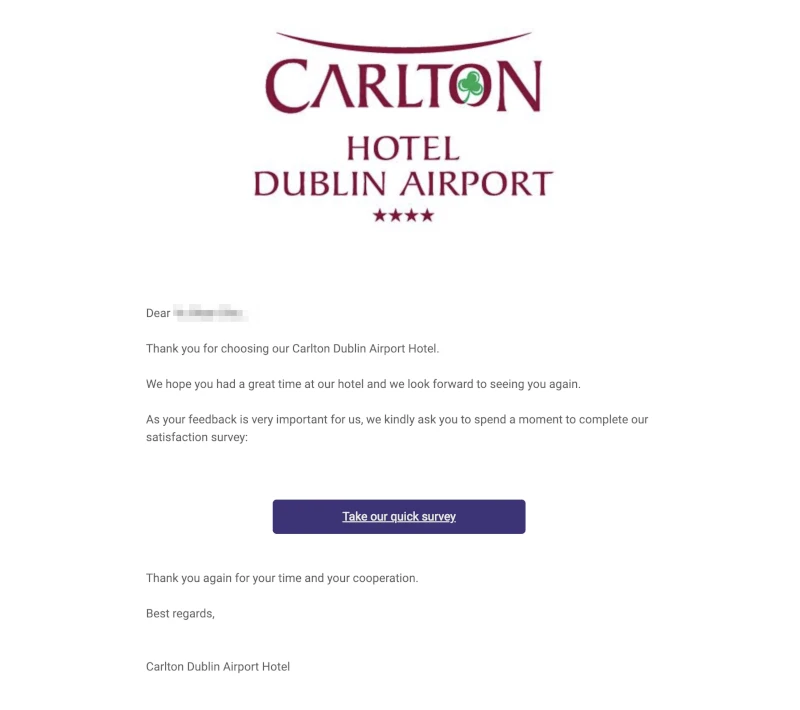
Pay attention to the call-to-action button text as well. It should inspire people to take action now rather than move on to reading the next email in their inbox! Here are some CTA button labels to inspire you:
Start Survey
Review Now
Click here to start!
Take our quick survey
Click here to enter the survey
For more best practices from an email marketing perspective, check out this guide from our partner, MailerLite, about how to get the best results from your survey emails.
9. Send a thank you email
If your customers take the time to provide feedback, the least you can do is say thanks. It will make them feel appreciated, increase customer loyalty, and let them know that the time spent submitting their thoughts was worthwhile. You can also encourage them to sign up to receive news and updates, check out your roadmap, or leave a review for other customers to read about their experience.

How to send customer feedback emails with MailerSend
It’s now time to apply all these best practices and create a customer feedback email template with MailerSend! First, you need to have a MailerSend account and a verified sending domain.
Ready to go? Let’s start by creating a new template.
1. Navigate to the Templates page and click on Create template.
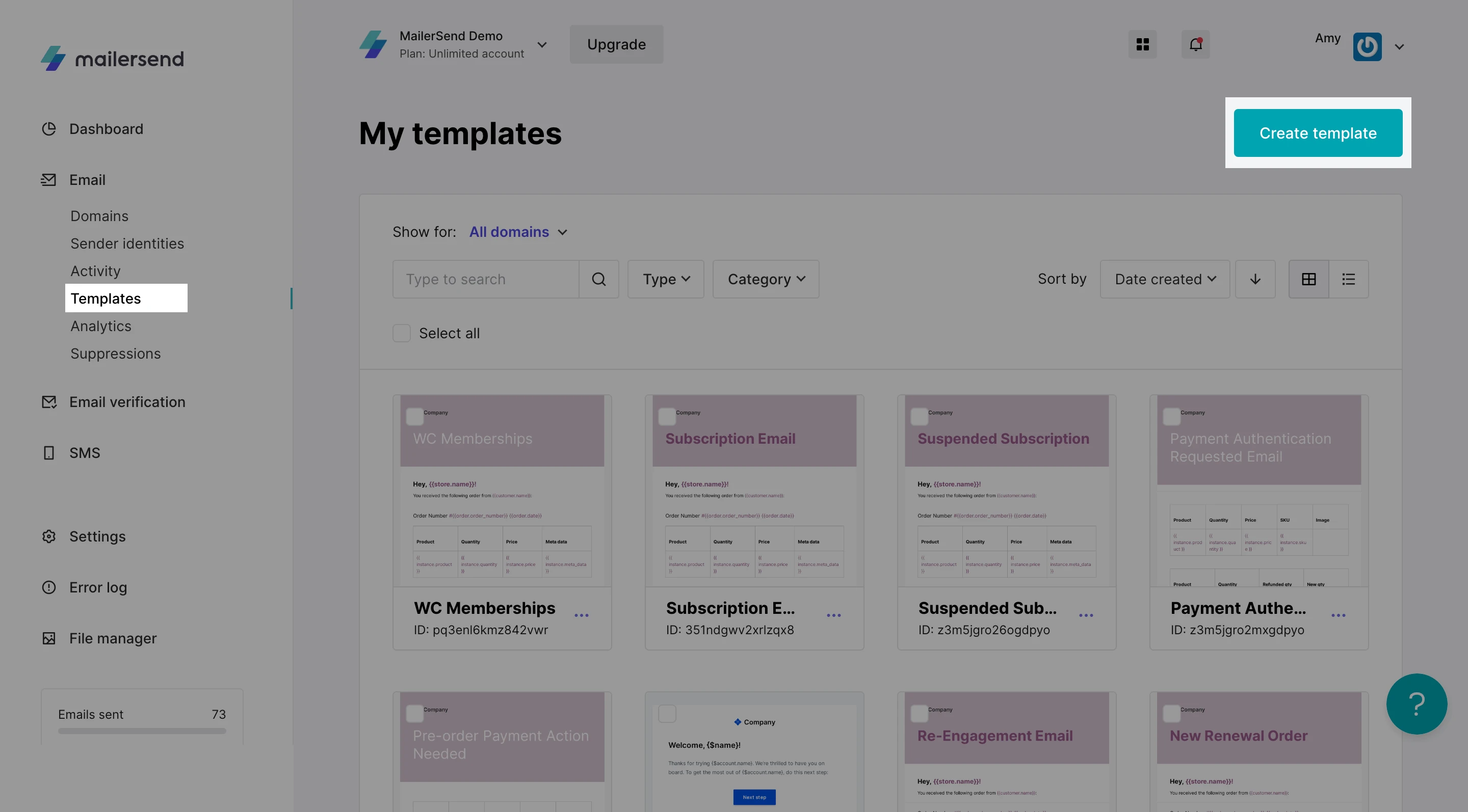
2. Choose to use the Drag & drop editor to create your first template.
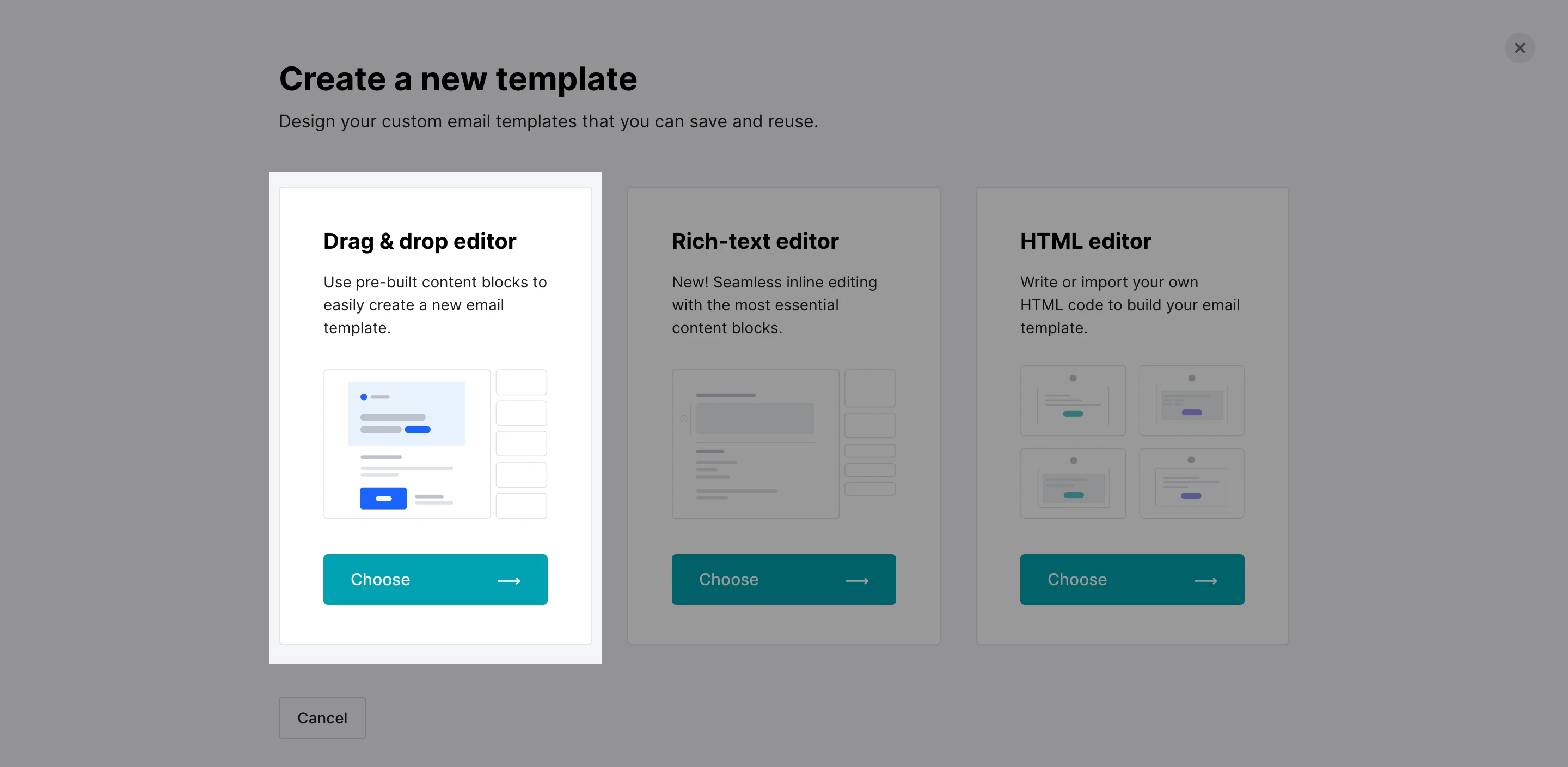
3. Pick the Feedback template in the gallery and click on the Choose button.
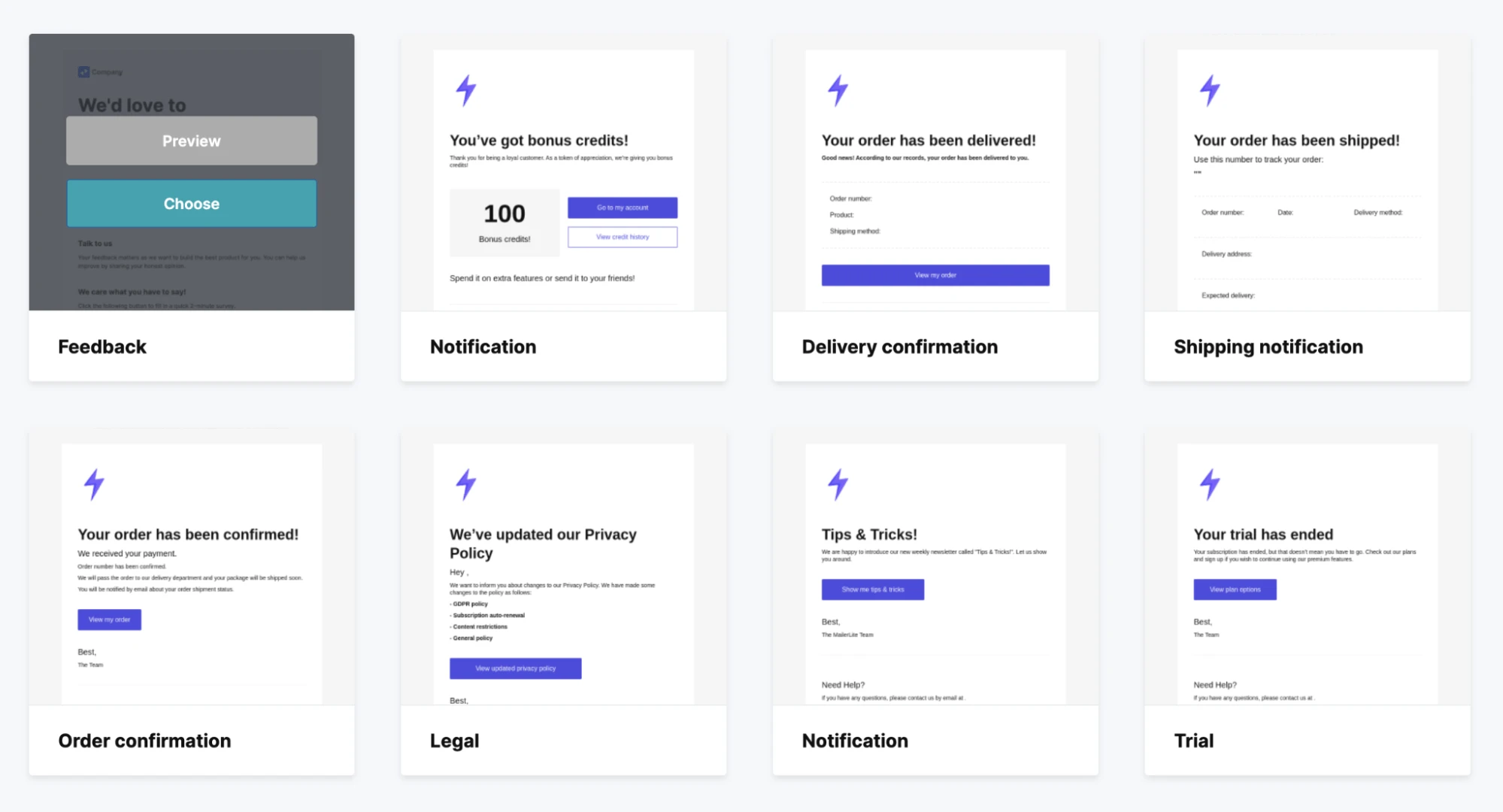
4. You can drag and drop content blocks to customize the template to match your brand identity.
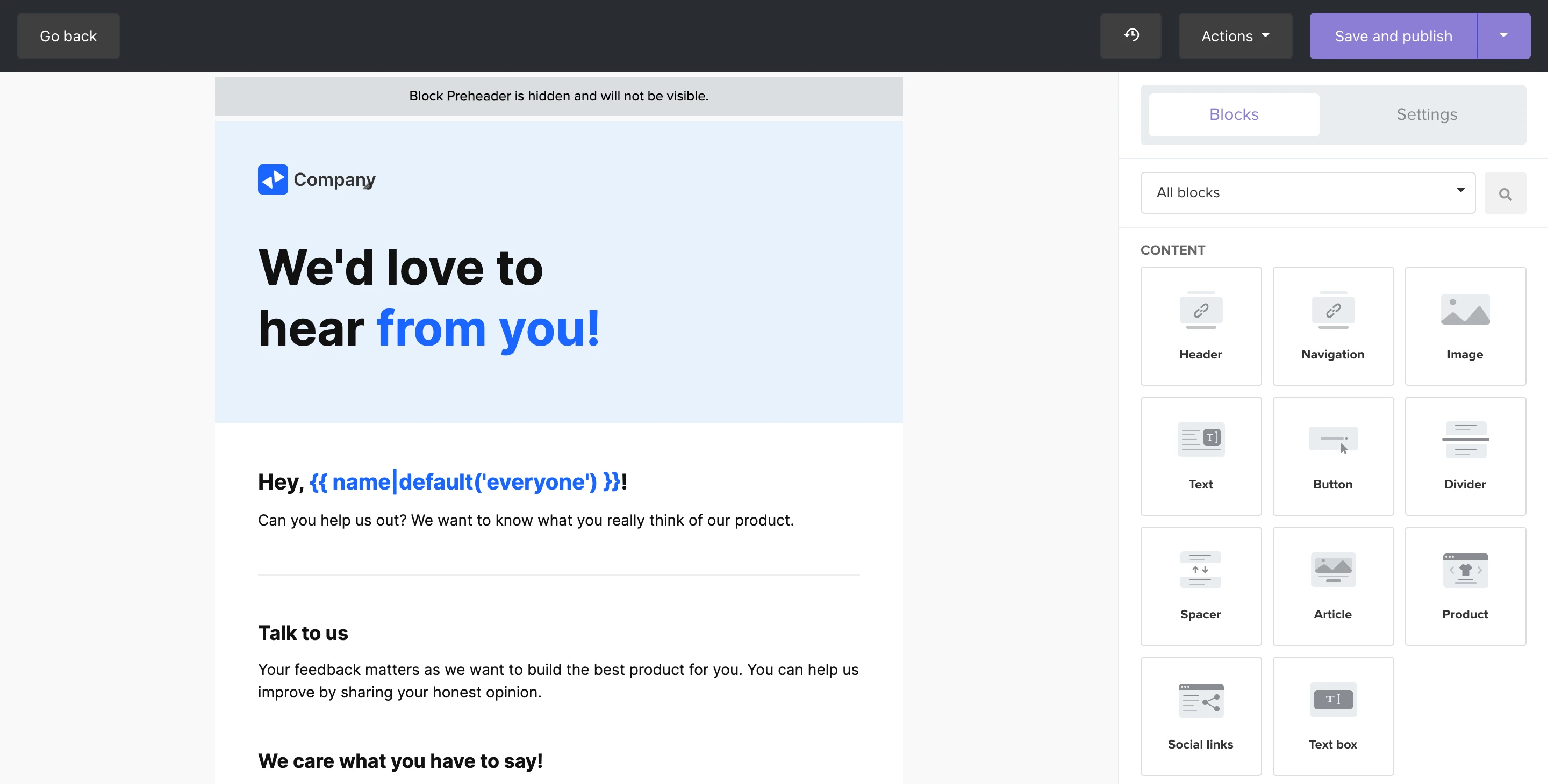
The feedback request email template is designed with best practices in mind, including a logo, a single question, a CTA, and a customer support link.
5. Once you’re done with your template design, click on the Save and publish button.
6. You’ll be prompted to give your new feedback template a name.
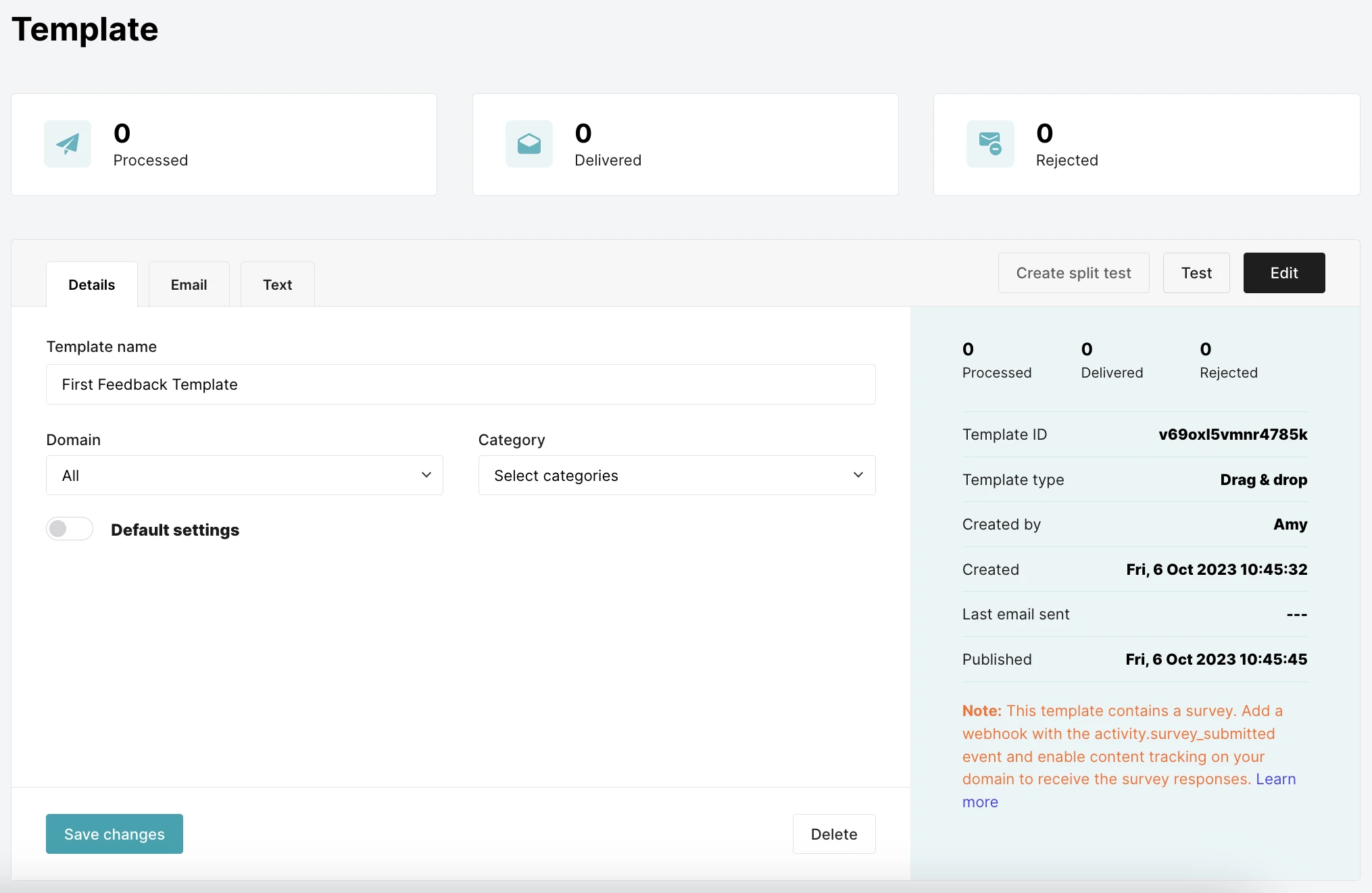
Here, you can also preview the email and plain text versions of your feedback template, send a test email, and try out different variations of the template with email split testing.
On the same screen, you will also see a unique Template ID for your template (v69oxl5vmnr4785k in this example) as well as sending instructions below for cURL, PHP, Laravel, Java, Ruby, Node.js, Go and Python.
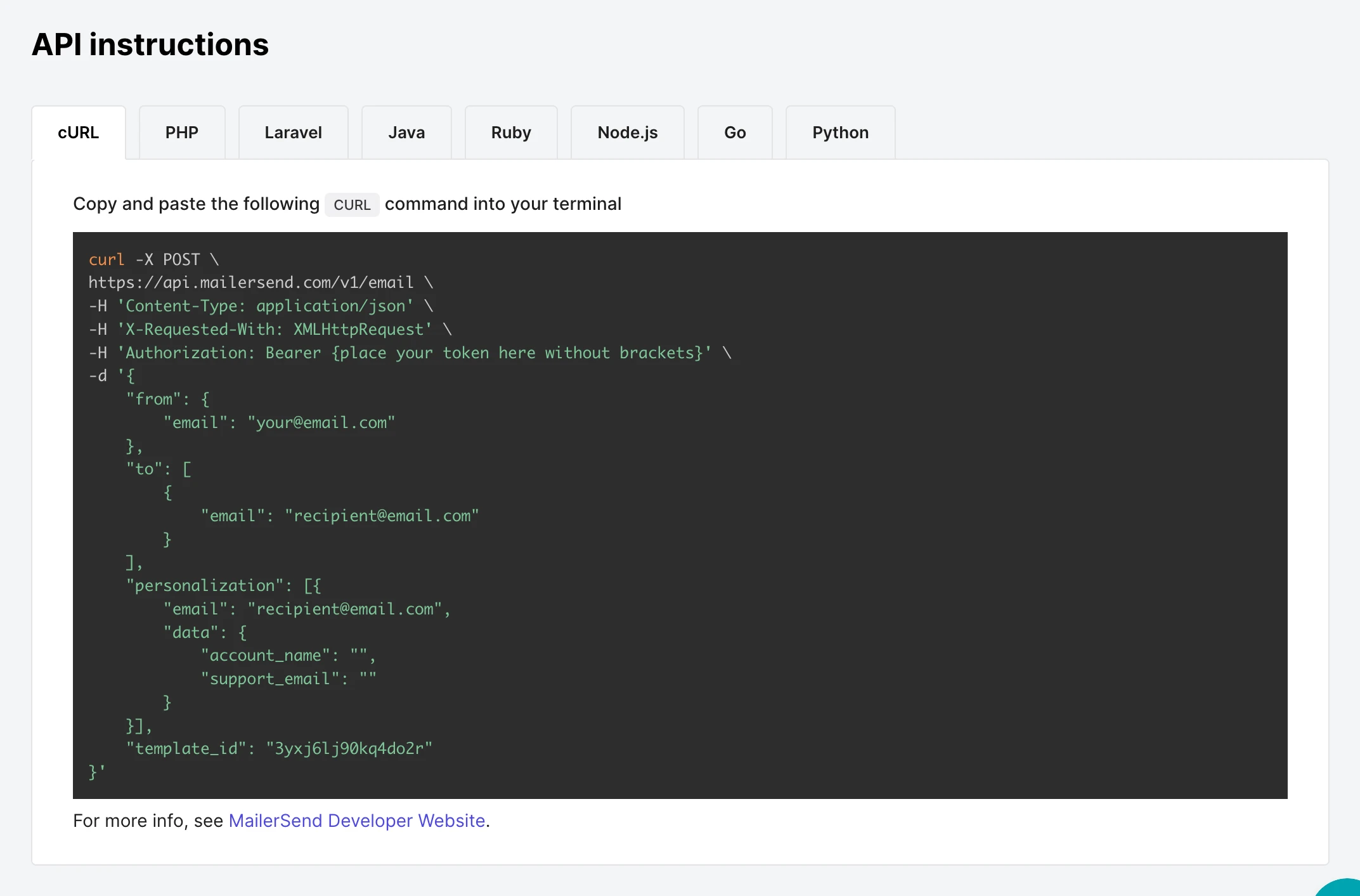
7. Remember to click the Save changes button before you leave.
8. To send an email you’ll need the Template ID which you can also find on the Templates page under the template’s name.
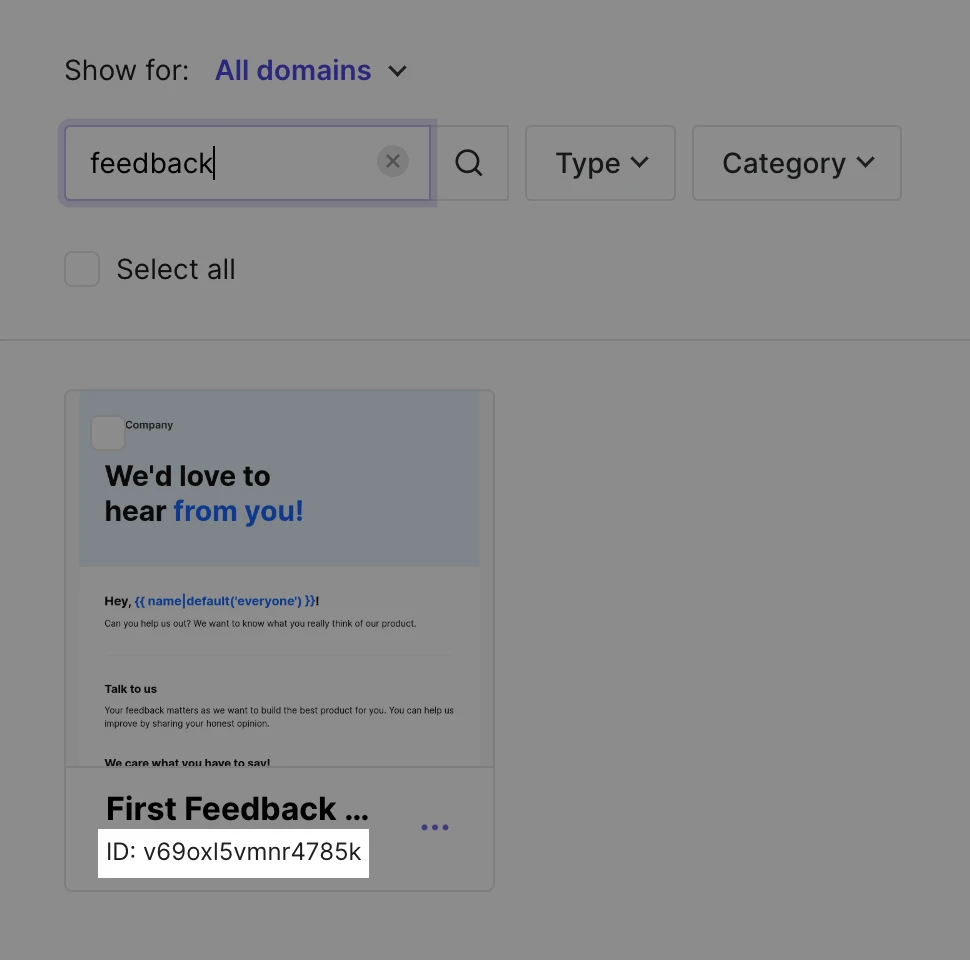
9. Follow the sending instructions for your programming language. For example, for cURL, insert your Template ID at "template_id". Add a subject under the template’s default settings or add it as a parameter within your API call.
curl -X POST \
https://api.mailersend.com/v1/email \
-H 'Content-Type: application/json' \
-H 'X-Requested-With: XMLHttpRequest' \
-H 'Authorization: Bearer {place your token here without brackets}' \
-d '{
"from": {
"email": "your@email.com"
},
"to": [
{
"email": "your@email.com"
}
],
"subject": "{$name}, do you have 2 minutes?",
"template_id": "3yxj6lj90kq4do2r"
}'
10. Check the status of your email message on the Activity page of your dashboard.
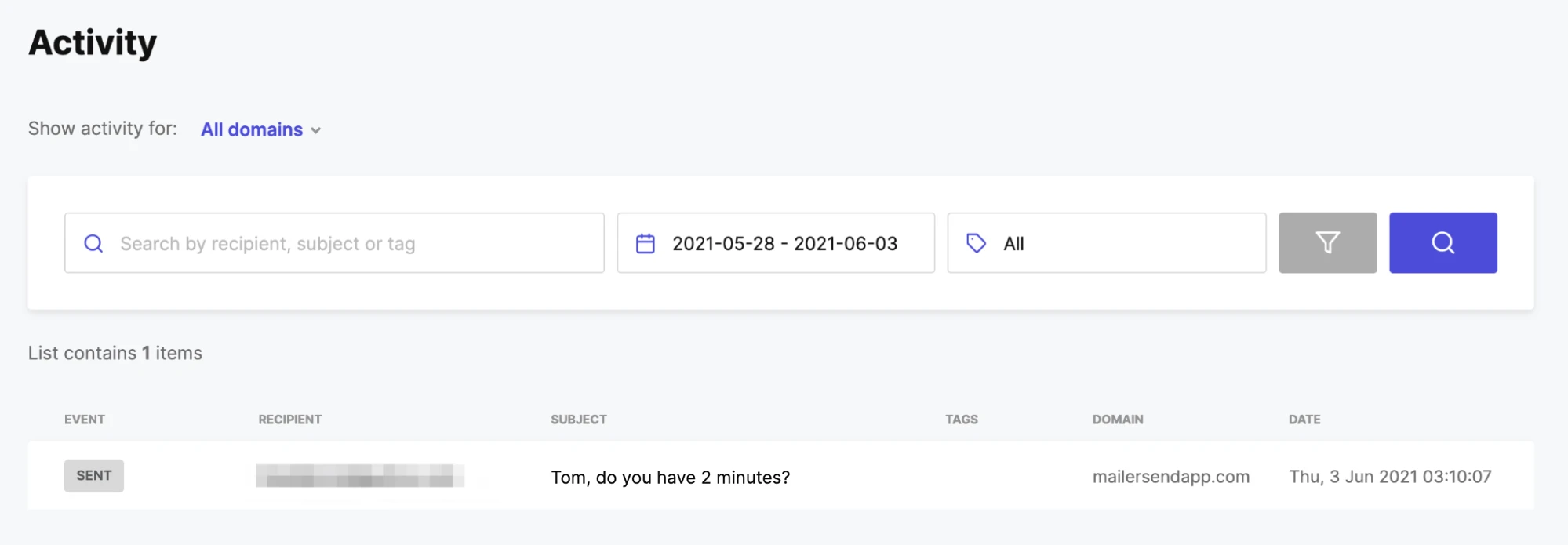
All good? Congratulations, you just sent your first customer feedback email using MailerSend! 🎉
Automate customer feedback emails
Now that you’re more familiar with using MailerSend, it’s time to automate your feedback emails so the right recipients receive them at the right time. The easiest way to do this is to use the MailerSend Zapier integration that automates your customer feedback workflows. Here are 3 prebuilt automations you can use.
Ask about the shopping experience
Use the following ready-made Zaps to send a feedback email 7 days after a new order is placed in Shopify or WooCommerce, for example.
Ask about reasons for a plan change
Use this Zap for Zoho Subscriptions to send a feedback email after a customer downgrades their subscription.
You can also automate your customer feedback workflow using other web automation solutions like Make and Pabbly Connect. Pick one that works best with your apps!
Close the customer feedback loop
The final step in collecting customer feedback is to close the feedback loop. This means sending follow-up emails to people who shared valuable feedback, letting them know that their voices have been heard and that you’re taking firm action.
MailerSend, for example, sent an email survey asking what product features customers would love to see next. The responses were categorized, shared with the team and prioritized. The final results were then published in a newsletter and roadmap page!
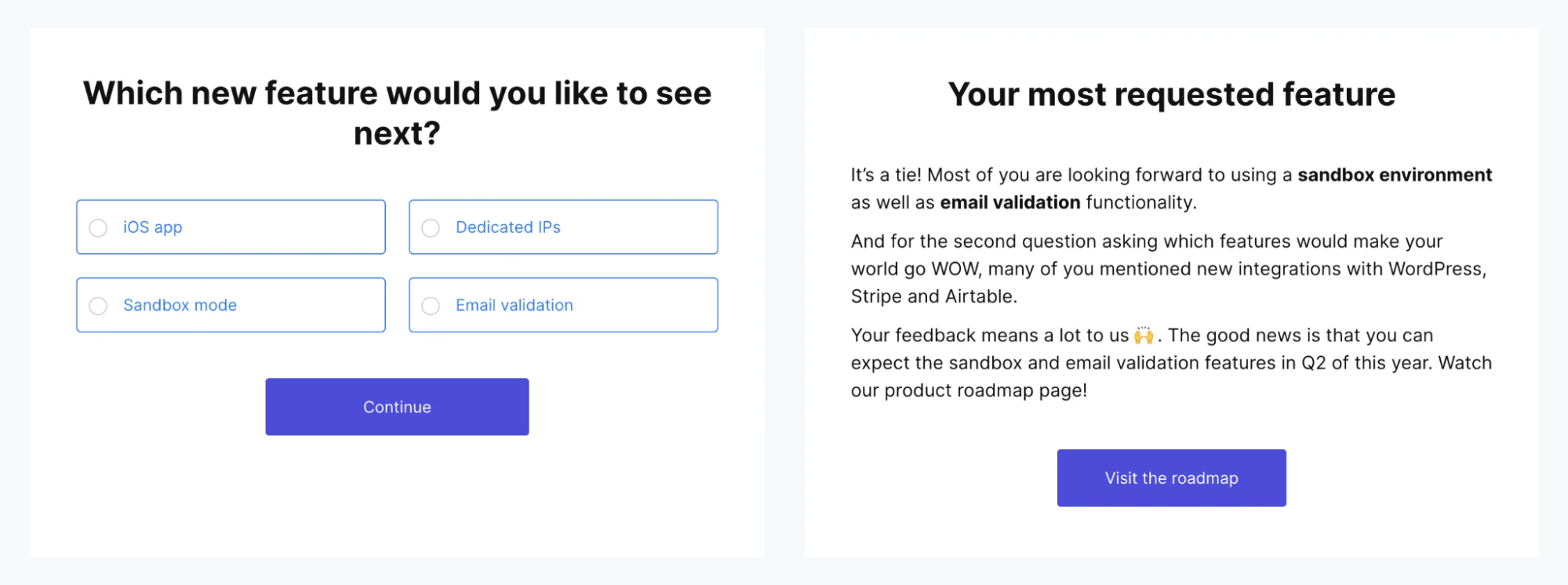
It’s time to start collecting positive feedback
You have learned how to create a powerful customer feedback system by pairing MailerSend together with a web automation tool. Now use this workflow to listen to your customers, continually improve your products and services, and aim for a perfect report card!
Do you send customer feedback emails? Let us know in the comments what tools you’re using to automate them.
Create professional feedback emails with MailerSend
Start off with 3,000/month for free and get access to pre-designed templates, drag & drop editor, inbound routing, SMS and more.



